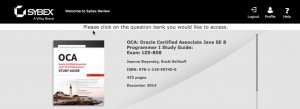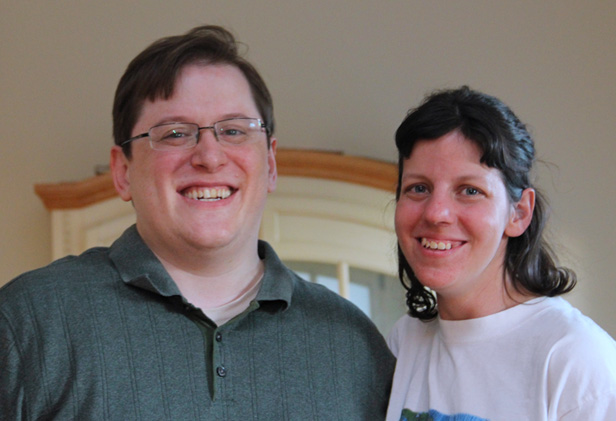If you’re one of the individuals who already purchased the e-book of our OCA 8 Study Guide, you might have noticed the online materials weren’t up yet. They went up today.
If you’ve ordered a printed book, we are getting close. Amazon.com is currently predicting delivery between January 27th and February 25th. We will post again on this blog as soon as we hear of an actual US delivery. First printed book delivery was reported on January 31st.
We are also doing a book promotion at CodeRanch next week. Ask us a question and be entered to win a copy of the book.
What do the online materials include?
- 3 mock/practice exams (60 questions each)
- 2 sets of flashcards
- A searchable glossary
- Electronic versions of the assessment test and end of chapter review questions from the book
How do I register for access?
Step 1 – buy the book. Once you have an electronic copy or printed copy of the book in hand, it is easy. When going to the Sybex test bank site, you are asked to supply/create an access code. Creating one is easy. You are asked for your name and email. You are also asked to answer a question that is easy if you have the book. (Like “what is the answer to question 3 in chapter 2” or “fill in the blank from the text of figure 2.4”). Then the access code is emailed to you. It came immediately when I tested it.
With the access code, you go back to the test bank site and create an account. You get to use your email as username and the password of your choice making it easy to remember. Then you are in!
How is the test engine?
This is a new test engine from Wiley. Older books came with a CD that had a Flash based system for questions. While I’m sure this is very nice for non-coding exams, the old engine only showed a handful of lines of code on screen which was bad for programming exams. I’m SO glad they improved this before our book came out.
The new test engine is beautiful. It shows roughly as much code as the real exam. It has a timer so you know how long you have taken. (It counts up instead of down like the real exam does, but you know how long the real exam gives you so this is fine. It’s actually a good thing since Oracle likes to change the length of time allowed for the exam.) The engine lets you bookmark questions for review; as does the real exam. The whole system is intuitive and nice to use.
Author advice
- The engine lets you choose how many questions you want in the practice exam. I recommend taking them with the 60 questions each that are indented. A lot of thought went into which questions appear together on a practice exam and you’ll get the most realistic experience.
- The flashcards allow you to choose sequential or random order. I recommend random order. Just like you’d shuffle your physical flashcards to make sure you remember best.



